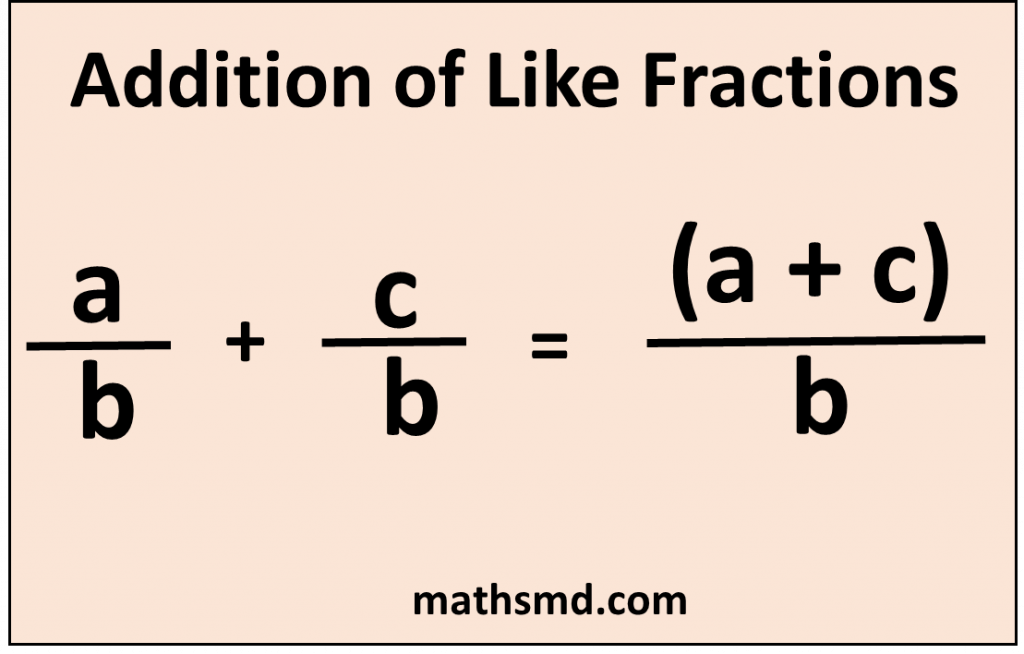Addition of Like Fraction With Examples
Addition of Like Fraction
Addition of Fractions
Fractions represents a part of a whole. The normal addition of numbers and the addition of fractions are different.
A fraction has a numerator and a denominator which is separated by a bar.
For example, 1/2, 4/3, 12/5, 24/7, 26/3.
Let us see more about addition of like fractions in this tutorial.
How to add Like Fractions
We know that a fraction has two parts, the numerator and the denominator.
A general fraction is represented in the form of a/b, where a is the numerator and b is the denominator, and b cannot be zero.
The addition of like fractions is same as finding the sum of two or more fractions.
There are two types of fractions.
Like fractions and unlike fractions.
Like fractions have common denominators and unlike fractions have different denominators.
Example: 1/3 and 7/3 are like fractions.
In the given fraction denominator is same(3) this fraction is called like fraction.
Addition of fractions with common denominators
Example: 4/7 and 5/7 are like fractions.

In this example, we add only the numerators and keep the denominators as 7.
We write it as 4/7 + 5/7 = (4 + 5)/7 = 9/7.
So the sum of 4/7 and 5/7 is 9/7.
The fractional form of this can be represented as 9/7.
So, the sum of given fractions is 9/7.
The addition of fractions is easy when they have a common denominator.
Let us learn the steps of addition of like fractions with the help of an example given below.
Adding 2/6 + 3/6
Step 1: Like fractions have same(Bottom numbers) denominators,
Step 2: Add the (Top numbers) numerators and put the sum over the common denominator.
Step 3: Simplify the fraction to its lowest form, if needed.

The above figure shows the addition of (2/6 + 3/6) fractions.
Here, 2/6 indicates that 2 out of 6 parts are shaded and 3/6 indicates that 3 out of 6 parts is shaded.
So, the total number of shaded parts is (2/6 + 3/6), which is equal to 5/6.
In this example, we add only the numerators and keep the denominators as 6.
We write it as 2/6 + 3/6 = (2 + 3)/6 = 5/6. So the sum of 2/6 and 3/6 is 5/6.
We observe the figure, we can see that out of 6 parts, 5 parts are shaded.
The fractional form of this can be represented as 5/6.
So, the sum of given fractions is 5/6.

Example: 1/3 + 7/3
= (1 + 7)/3
= 8/3.
Example: 2/5 + 8/5
= (2 + 8)/5
= 10/5
= 2
So the final answer is 2.